Lithographs
Lithography is a printmaking process based on the opposition of oil and water. The artist draws on a flat, ground limestone or metal plate with a greasy medium such as a lithographic crayon or an oily liquid wash called tusche. The etching of the stone does not create an engraved surface, but helps keep the drawing intact, and the white areas white. When printing, the stone is sponged with water, and ink is rolled on to the greasy sections, while the water repels the ink elsewhere. The stone is then covered with a sheet of paper and run through a press to create the print. The stone must be inked again for each additional print. For a color print, a different drawing is done for each color.
Angelita
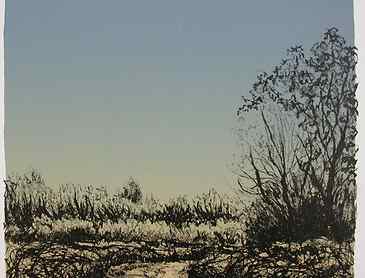
2007, 5" x 5"
lithograph
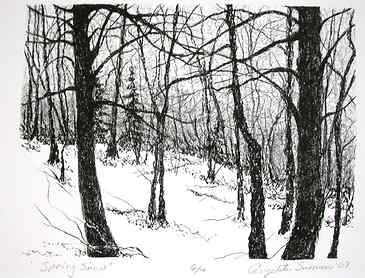
2007, 6½" x 8½"
lithograph
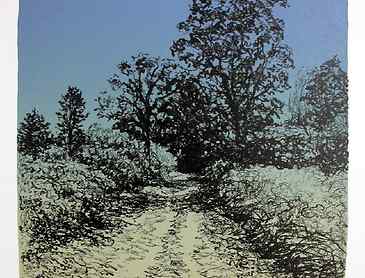
2007, 5¾" x 5¾"
lithograph
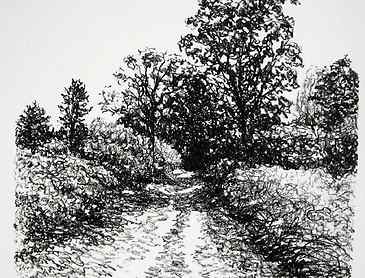
2007, 5¾" x 5¾"
lithograph
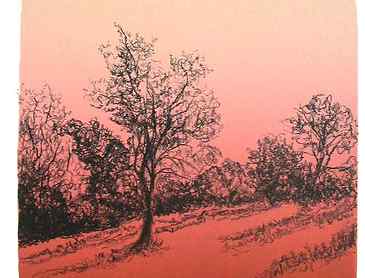
2006, 6" x 6"
lithograph
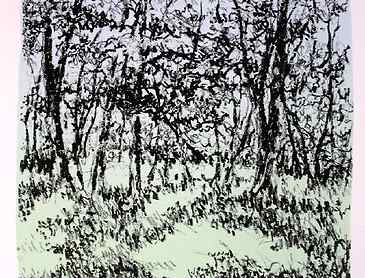
2006, 6" x 6"
lithograph
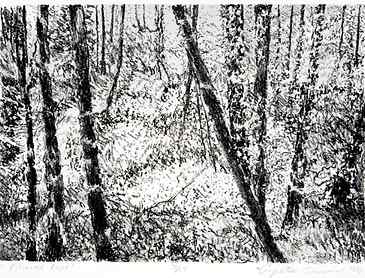
2006, 7" x 10"
lithograph
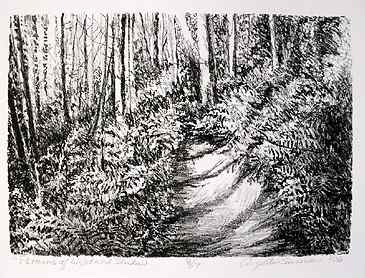
2006, 7" x 10"
lithograph
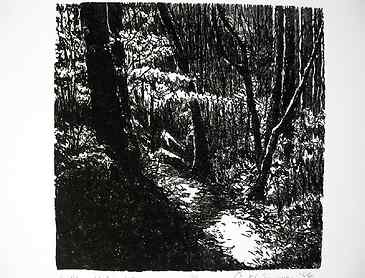
2006, 7" x 7"
lithograph
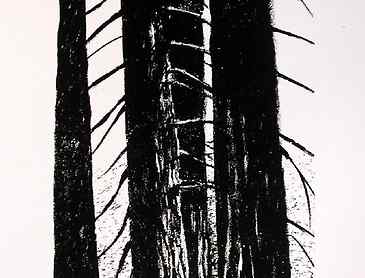
2006, 8½" x 5"
lithograph
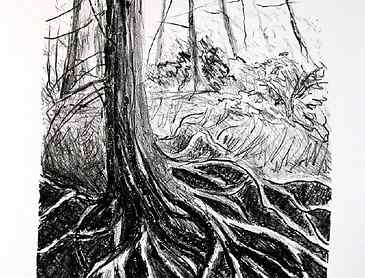
2006, 12" x 7½"
lithograph
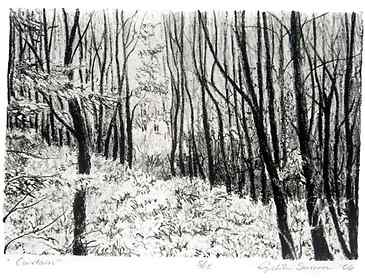
2006, 7" x 10"
lithograph
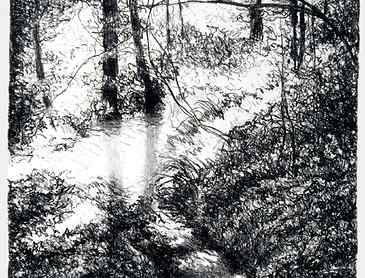
2005, 15" x 11"
lithograph
Lithography process

The first step is to draw the composition on the stone
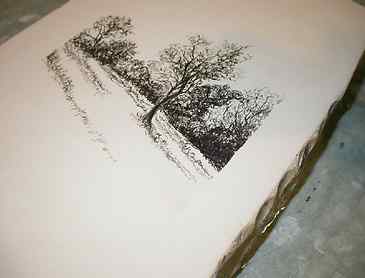
Close-up view of the drawn image
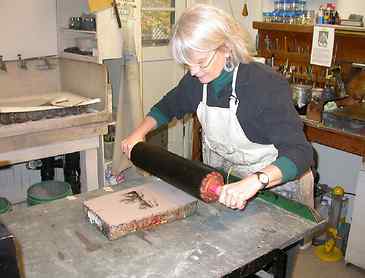
After the surface of the stone is flooded with water, the stone is inked with oily printer's ink
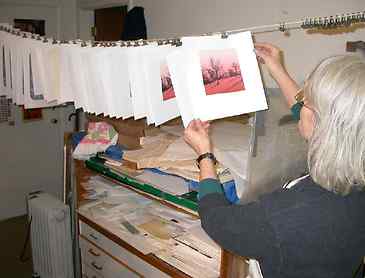
Paper is applied to the inked stone in the press, thus creating the print, which is checked to be sure it came out well

Once finished, prints are hung to dry